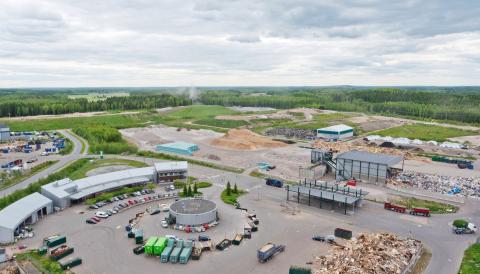Kujala waste symbiosis in Smart and Clean Lahti
In the region of Lahti Region (Finland), waste recovery is very high: the total recovery rate was 97 % in 2018. The recycling rate at the moment is 43 %. The goal is to increase recycling and diminish the amount of waste used for energy production.
The mechanical sorting plant can process up to 65,000 tonnes of mixed waste, waste for energy production and construction waste per year. From these waste types the plant separates fibres, plastics and metals for recycling. The innovative and modern sorting plant utilises the newest mechanical waste-sorting technologies. Waste separation is based on material size, shape, optical and physiological features.
As the infographic shows, the Kujala Waste Centre in the Finnish city of Lahti collects also biowaste and bioresidues and processes these into biogas, biofuel, compost and fertilizer. The centre also collects hazardous waste and waste of electrical and electronic equipment (WEEE) for further processing.
The main operator at Kujala Waste Centre is Päijät-Häme Waste Management Ltd providing waste management for 10 owner municipalities and offering 7 waste reception stations for local residents.
The soil processing plants turn the compost produced into raw soil materials and fertilisers. This allows the nutrients stored in biowaste and sludge to be put back into circulation.
Only a fraction of all waste is disposed of at a landfill site. The landfill site produces methane, which is piped to a local brewery and soft drinks company whose heating station in turn uses the landfill gas as process steam. The rest of the landfill gas is turned into electricity and heat.
The wood and energy treatment plant turns sorted energy waste into high-quality Solid Recovered Fuel by shredding, screening and separating out metals. The amount of energy generated from waste in 2018 is equal to the amount of heating energy used by about 13,900 detached houses a year.

